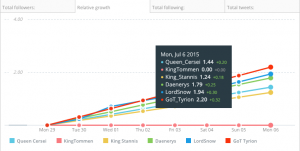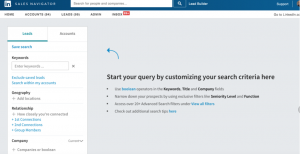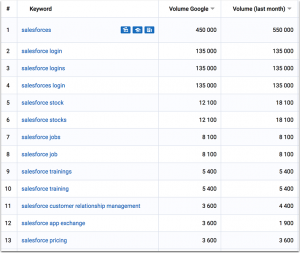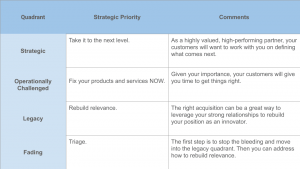Do you have all the data you need? If you don’t, here are the issues to look at when picking a data enrichment provider.

The focus of most B2B companies is developing products and services customers need. Selling them requires detailed customer information. It falls on marketing to get that data, usually via event registrations, website forms and the like. Sometimes that isn’t enough, which is why data enrichment providers exist.
The types of data they can provide include job titles, department, location, seniority, email addresses, phone numbers, companies to target, financial statements, sales figures, customer information, market research data and much more.
While that is alluring, how do you know if you need it? And, how do you know which vendor to go with? Here’s our guide to finding the right data enrichment provider
How to tell if you need data enrichment
“What we hear is, ‘Our marketing campaign is all top of funnel,’” said Sneh Kakileti, VP of Product Management for data provider ZoomInfo. “‘Our marketing campaigns are inefficient. We are spending more than we believe we should be getting because we’re not converting at the rates that we would like to.”
Here are situations that can be helped by enrichment:
- Inaccurate or incomplete data: If your company is having problems because of inaccurate or incomplete customer data, data enrichment can fill in the gaps and improve data quality.
- Difficulty in personalization: If you’re struggling to personalize customer interactions, data enrichment can add additional context and attributes to customer profiles.
- Low customer retention: This may mean you don’t know enough about customer preferences and behaviors to create targeted retention strategies.
- Inefficient targeting: Poor audience targeting is frequently the cause of failed sales and marketing campaigns. Data enrichment can provide insights into customer habits and demographics.
- Missed upsell opportunities: Do you have all the data you need for a comprehensive view of customer behavior?
- Fragmented data sources: Using multiple, unlinked data sources can result in records that are incomplete and/or have different information for the same customers. Integrating and supplementing that data can solve that.
- Regulatory compliance: Better data management and enrichment processes can make it easier to ensure data accuracy and comply with privacy laws like GDPR.
How to tell if your marketing team has the data it needs
Start by looking at your use cases. What don’t you have? Audit your data for inaccuracies, duplicates and missing information. Define the specific attributes you need to fill these gaps. Then, look for providers that have a strong reputation for data accuracy and coverage in your industry or target geography. Consider conducting demos or trial periods with potential vendors to test the quality, accuracy, and relevance of the data they provide.
How easy is it to use the data?
Test out the vendor’s data to see if it seamlessly integrates into your existing systems.
If it doesn’t, be sure the problem isn’t on your end.
“Many of the bigger marketing stacks have ‘fixed schemas,’ which force the business to adopt a proprietary format for collection,” said Ted Sfikas, Field CTO at data analysis provider Amplitude. “This results in multiple process steps to be taken in order to fuel the tool that is enriching the data.”
For example, a CDP that mandates a fixed schema will require a business to buy that CDP’s facilitating data collection technologies. That means companies aren’t able to pick the best vendor, with the best price/functionality needs for their value proposition. Platforms like Snowflake, Databricks, Azure and AWS will keep the schema open, providing customers with more flexibility.
Does it offer identity management?
Identity management systems help ensure that customer data is accurate and consistent by consolidating records and eliminating duplicates. They make sure that the right information is added to the right record.
“Vendors like Snowflake, Databricks and AWS are very good with this,” said Sfikas. “AWS offers a product called Entity Resolution, which uses enterprise-grade Identity Graphs that can link two datasets together on a wide variety of criteria. Snowflake and Databricks also offer Identity Resolution which is quite popular.”
So, be sure the data enrichment solution you choose provides identity management. The single customer view is not possible without strong identity management, and so any data enrichment techniques will not be effective without this.
Data security issues to be aware of
One of the most significant pitfalls is not thoroughly assessing the vendor’s data security protocols. Sharing critical data with a third-party vendor can pose risks if they do not have robust security measures in place to prevent data breaches and protect sensitive information.
Some tools require their platform have a copy of your data. This allows it to process data rapidly and as a result, do things that other tools can’t. However, “there are many scenarios in which you absolutely do NOT want the tool you pick for data enrichment to have its own [copy of your] database,” said Sfikas.
- You don’t want to pay twice for the same data: Why should I pay for the same data I have in my warehouse twice? Why can’t the CDP simply query my warehouse to get the information it needs?
- You want rock-solid security: If the same data lives in five different databases, there are five different places it can be breached.
- Because it makes many processes more efficient and more cost-effective: If the data is in your warehouse, then it makes your processes faster and more efficient.
Data enrichment isn’t one-and-done
For data enrichment to pay off, you have to do more than add new information to what you already have. You need to have a strategy for improving and maintaining data quality.
“The most successful customers are the ones that understand that a data strategy is not one-and-done,” said ZoomInfo’s Kakileti. “Quality is never a three-month project that we go clean up data quality. It’s a cultural shift, and there are operational people, products and processes put in place to maintain, data quality, integrity, privacy on an ongoing basis.”
Without that, you’re just waiting for the data problems to get big enough to force going through this entire process again.
The post How to choose a data enrichment solution appeared first on MarTech.
(4)
Report Post









